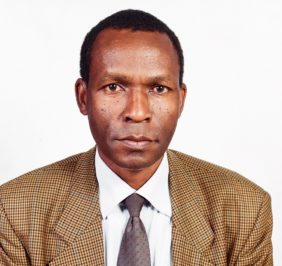Overview of technology, infrastructure and buildings
Towns, cities or metropolitan regions are a concentration of millions of people, many mixed human activities, buildings, infrastructure and technology that form a complex and dynamic system. People, their activities, buildings, infrastructure and technology directly relate and form a complex city community. In the light of the world sustainable development goals and the congress theme on smart communities, it means that human activities, buildings, infrastructure and technology must be planned and developed in an integrated way so as to serve all people and interests in the city and the region. “Smart communities” also means planning and developing socio-economic activities, buildings, infrastructure and technologies that are accessible, affordable, energy efficient, green and environmentally friendly and sourced locally. As complex entities, cities must have appropriate information and communication technology (ICT) system to effectively manage them.
Track 1 is focused on three sectors that reflect experience from both developing and developed world cities and regions. The three sectors are – information and communication technology, buildings, and infrastructure.
- Information and communication technology (ICT)
The term “smart” development of communities is closely related to the use of ICT in the planning, development and management of cities. It is well known that information is power. In order to effectively plan and manage the complex cities, adequate information must be collected, analyzed and processed to inform decision making. This sector will be looking at various ICT options as it relates to urban planning and management, buildings, and infrastructure works. How effective and smart are these ICT options in different world cities and sectors?
-How can ICT support city planning, development and management?
-What is the data requirement for an integrated urban ICT system?
A number of ICT tools, case studies and projects are presented and illustrate the application in city planning and management.
- Buildings
Cities are a concentration of and a mixed complex system of buildings. Building structures vary from simple residential units to huge, tall and complex blocks that include shopping malls, offices, hotels, and industrial parks. Building design, construction and operation technology in cities is changing fast and becoming complex. Buildings must now be “green and smart” – energy efficient, environmentally friendly and use local materials.
The sector will present actual projects, highlighting the various stages in planning, design, construction and operation of the building works. The presentation will also be aimed at rating the building works as being smart and green. The use of World Green Building Council standards or other national rating standards will be encouraged.
-How do we make urban spaces and buildings more green and livable?
-Various options explored include – new technology options in movement and interaction, street design, and green buildings.
- Infrastructure
The Infrastructure and utilities system has been described as the life blood system of a city. World urban population is growing fast and the increasing demand is putting a lot of strain on the supply and maintenance of infrastructure services. The sector will address various sub-sectors, including water supply, sanitation, drainage, energy, communication and transport.
Cities are major consumers of water. Many cities are faced with acute water shortage as the supply is not able to meet the demand. Water sources are getting depleted and many are getting polluted. What are the exact water challenges facing world cities and what efforts have been put in place to tackle these challenges? What smart technology options are available to sort out the water challenges in our cities?
Inadequate poor waste water and solid waste disposal systems and floods are challenges facing many towns and cities globally. What smart and green technology options are available to tackle these problems? The potential for waste water recycling and ban on use of plastics will be areas of interest in the congress.
In any country, cities are the major consumers of electrical energy and fossil fuel. Production of electricity from nuclear fuel, coal and oil is no longer considered sustainable and poses serious risks to the environment and human health. The use of smarter and greener energy sources like solar and wind is receiving encouraging support globally. What green energy potential exists in different countries and cities and what is the level of utilization? How has technology improved the supply and use of green energy supply?
The Congress will also be addressing the transport challenge in our cities. Cities are faced with heavy traffic jams, long commuter distances, heavy usage of the private car, poor public transport services, high transport costs, high accident risks, and air pollution. There is poor provision for walking and cycling infrastructure. What safer, smarter and greener transport technology options are available in out towns?
We invite you to discuss smart technology, buildings and infrastructure.
-What new energy and transport technology options are available to promote sustainable urban development?
Some of the potential solutions available include solar products and expanding the pedestrian infrastructure in our cities.
